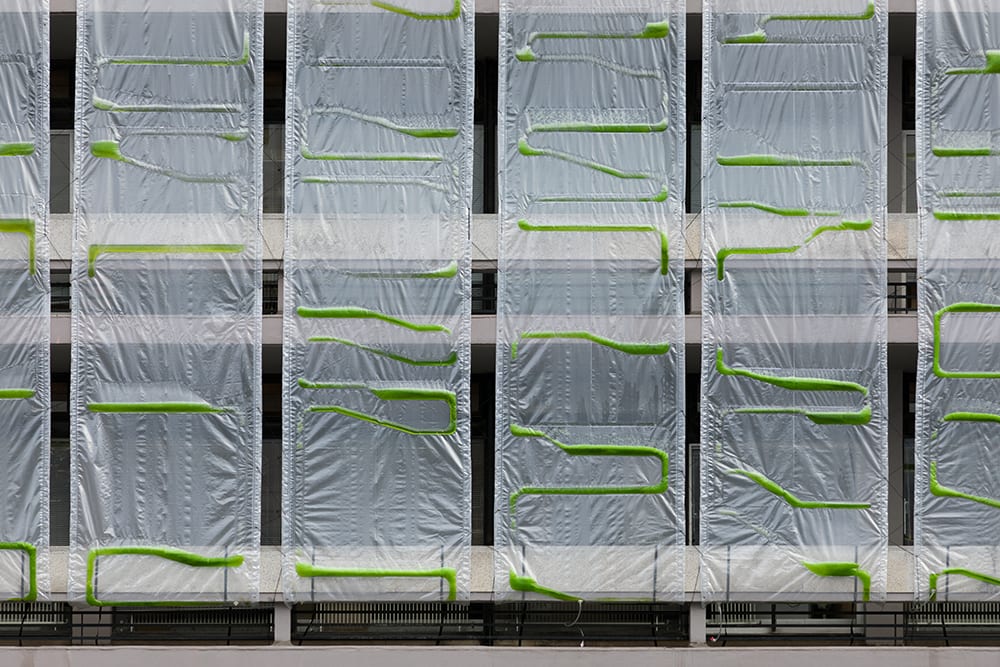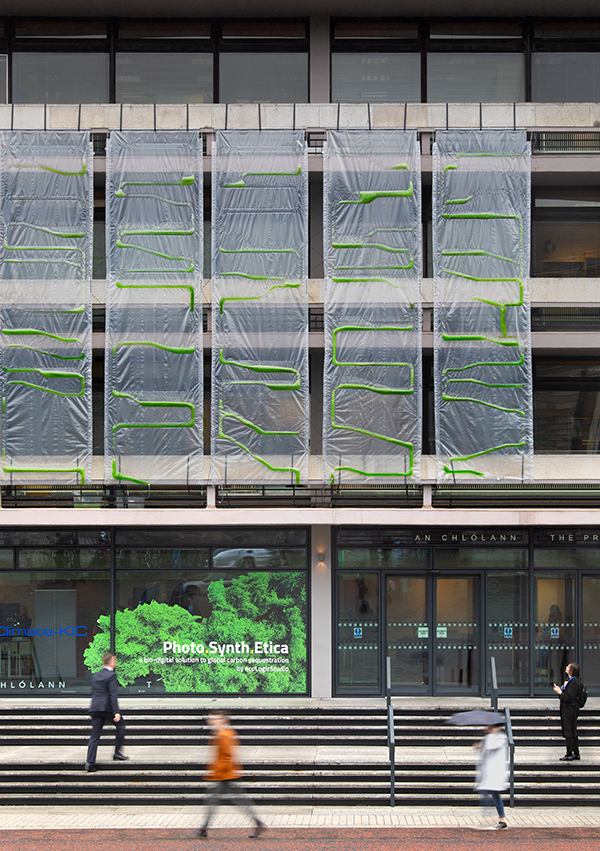The team behind a new algae facade system designed to suck CO2 from polluted city environments is developing AI and computer vision technologies to give it the ability to self-learn.
The “urban curtain” photobioreactor is a bioplastic membrane covered with pillows of microalgae that capture and store CO2 from the atmosphere and release oxygen.
The system was developed by PhotoSynthetica, a company set up by London-based architect EcoLogicStudio in partnership with researchers at Bartlett University College London (UCL) and the University of Innsbruck, as a more efficient and compact alternative to planting trees or shrubs in cities with limited space.
The company is now developing a machine vision algorithm as part of the software control system for the facade, able to read and analyse the pattern growth of the algae in real-time to help improve overall efficiency and generate other insights.
Mario Poletto, co-director of EcoLogicStudio, told BIM+: “The software is still under development, but it is a very important element that really will make the system ‘bio-smart’. Machine vision will help it read and monitor patterns of growth, and AI will help it learn and develop a real-time response to what is happening.
“Ultimately, the idea is to have the living culture [the microalgae] and the management system co-evolve so that maintenance requirements are almost zero and the system becomes self-aware and able to adapt to changes in microclimate and occupational needs.”

Semi-transparent pillows use daylight to feed living micro-algal cultures

PhotoSynthetica’s urban curtain is divided into a series of modules designed to match the specific context to optimize algae growth. Semi-transparent pillows use daylight to feed living micro-algal cultures, unfiltered air introduced at the bottom of the curtain creates air bubbles that rise through the watery medium coming into contact with hungry microbes.
CO2 molecules and air pollutants are captured and stored by the algae and grow into biomass, which can be harvested to produce the bioplastic fabric for the curtain. To culminate the process, freshly photosynthesised oxygen is released at the top of the curtain and into the urban microclimate.
Trial installations, on buildings in Dublin and Helsinki, were able to remove one kilo of CO2 per day, equivalent to 20 large trees. PhotoSynthetica plans to offer a commercially scalable and specifiable solution, for both facades and public spaces, by the end of 2020.
According to Poletto, sophisticated software is already an important aspect of the system. Design software analyses the specific building context, microclimate orientation, and based on that develops a custom pattern for the curtain. “This ensures the best shape and form, and density of cultures to create a system that works optimally in that context,” he says.
Software used during operation monitors real-time data from sensors in the culture medium on temperature, pH, water salinity and CO2 absorption. “This gives an indication of what tweaking and changes are necessary to maintain the culture in the best possible condition as part of the management and maintenance regime,” says Poletto.
A key driver behind the project is to converge the digital and the biological realms and move AI away from being a purely software-based and embedded into the biological fabric of the city.
Claudia Pasquero, director of the Urban Morphogenesis Lab at the Bartlett UCL and co-director of EcoLogicStudio, says: “One theme is to apply research on bio-computation over the past 10 years – ie how elements like microalgae and moulds compute – to the built environment. By developing the software aspect, we are able to unlock the intelligence of microalgae and use them as sensors.”
Images: PhotoSynthetica.co.uk













